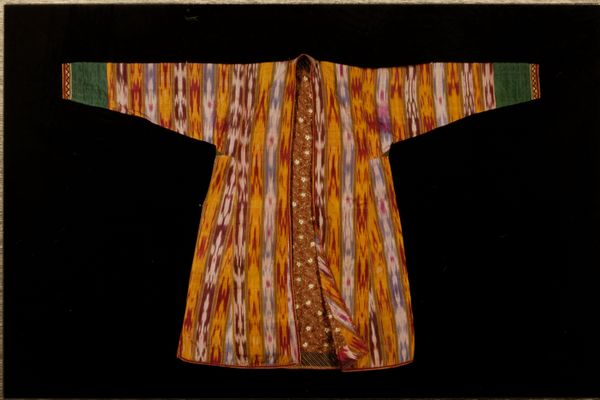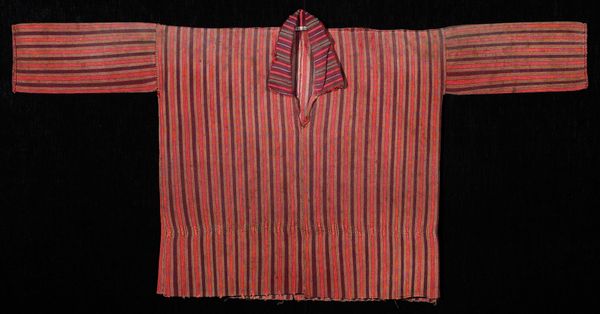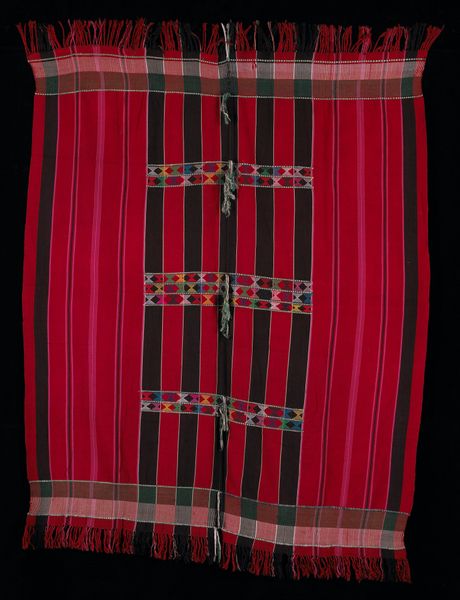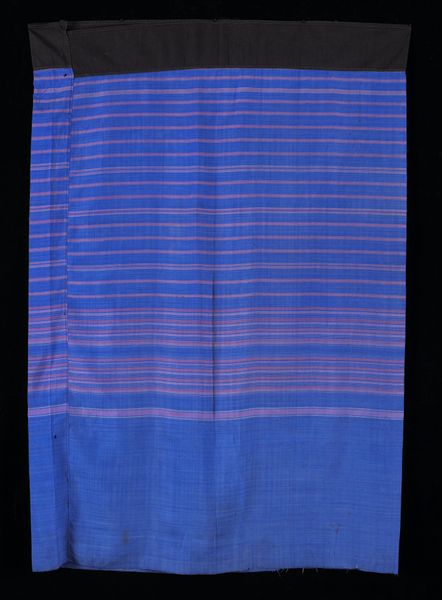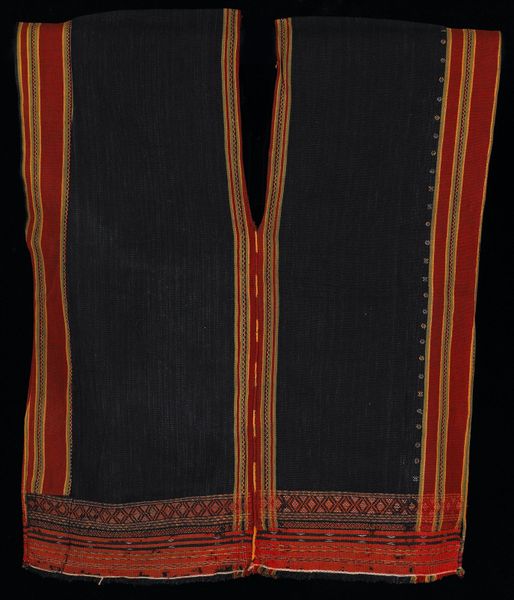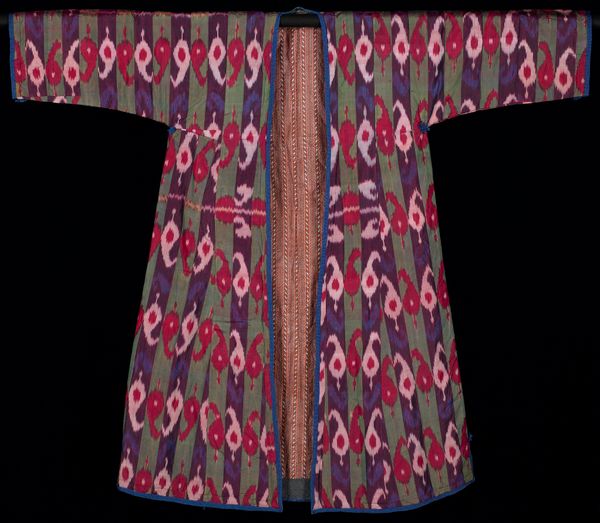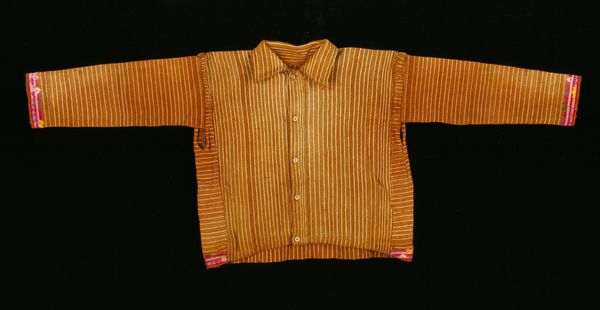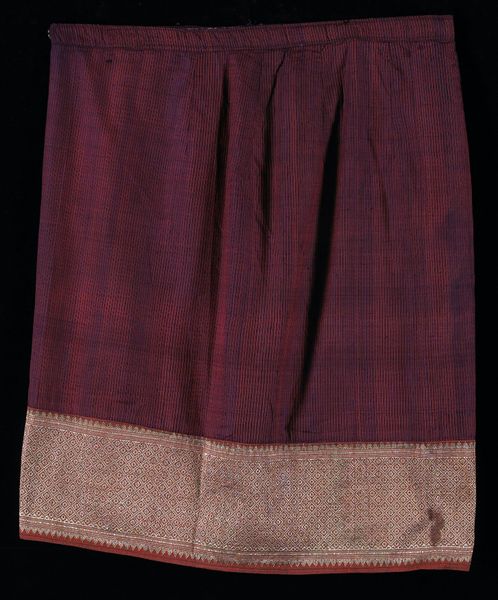
fibre-art, textile, cotton
#
african-art
#
fibre-art
#
textile
#
cotton
#
islamic-art
#
yoruba-art
#
mixed media
Dimensions: 42.5 x 49.5 in. (108.0 x 125.7 cm)
Copyright: Public Domain
Curator: This is the "Blue Top (Gbariye)", a Yoruba textile likely created in the 20th century, a vibrant example of African art now housed here at the Minneapolis Institute of Art. Editor: It's surprisingly simple in form, but that striking indigo blue grabs you immediately, doesn't it? It feels both familiar and ancient somehow. Curator: The history of indigo dyeing in Yoruba culture is profoundly tied to social and economic structures. Think of the specialized knowledge needed to produce these dyes. It signifies status, skill and cultural capital. Editor: The vertical stripes, combined with what looks like very precise needlework near the collar, is quite arresting. It evokes ideas of traditional weaving methods, of course, but beyond that, I am immediately thinking of concepts around identity, performance, gender roles, and the political significance that clothing may represent. How does dress mediate societal control, and subversion? Curator: Precisely. Indigo textiles have always been integral to Yoruba identity, especially the identity of women. These textiles served not only as clothing but also as crucial commodities, instruments of economic independence and agency, providing them status through trade and artistic talent. Editor: What role do institutions play here, though? Is there enough information about how this item got to the Minneapolis Institute of Art, and what forces contextualize it beyond a "primitive art" context, especially in thinking about what is gained and what might be lost when viewing the piece outside of its place of origin. Curator: That's key to acknowledge the context shift. Thinking intersectionally, it calls us to consider the impact of colonialism and its continuing consequences in Western museum collections, and whose voices are centered. Editor: A crucial observation. I also note the texture seems soft and worn which speaks volumes about personal narrative, perhaps community tradition. Seeing the piece, the work and life around it really gets a deeper dialogue going. Curator: Definitely! Considering this work beyond a museum label to embrace more holistic understandings and lived experiences will let us further address difficult issues about visibility, identity and structural inequity. Editor: Precisely! That helps shift its narrative into a more open context and one where we look at both personal and political representation in terms of access and understanding.
Comments
No comments
Be the first to comment and join the conversation on the ultimate creative platform.

